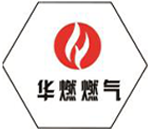
Dec . 04, 2024 16:39
Back to list
Understanding the Functionality and Applications of Pneumatic Control Valves in Industry
Understanding Pneumatic Control Valves A Key Component in Automation
Pneumatic control valves play a pivotal role in modern automation systems, enabling precise control of air flow and pressure. These valves are essential in various industries such as manufacturing, packaging, and automotive, where they regulate the power and movement of pneumatic machinery.
What is a Pneumatic Control Valve?
A pneumatic control valve is a mechanical device that regulates the flow of compressed air or gas in a pneumatic system. These valves open, close, or partially obstruct the flow of air or gas to achieve the desired speed and pressure in various applications. By adjusting the flow of air, these valves help in controlling the movement of actuators, cylinders, and other pneumatic devices, enabling efficient operation of machinery.
Types of Pneumatic Control Valves
There are several types of pneumatic control valves, including
1. On/Off Valves These valves operate in a binary fashion, either allowing or stopping the flow of air. They are commonly used in applications where complete shut-off is required.
2. Flow Control Valves These valves regulate the speed of an actuator by controlling the amount of air that passes through. By adjusting the flow rate, these valves can influence the movement speed of pneumatic cylinders.
3. Pressure Control Valves Designed to maintain or limit pressure within a system, pressure control valves protect equipment from damage due to excessive pressure. They can be set to operate at specific pressure levels to ensure safety and efficiency.
4. Directional Control Valves These valves determine the direction of airflow in a system, allowing the control of multiple actuators with a single source of compressed air. They are essential for applications requiring alternating movements of actuators.
pneumatic control valve

Working Principle
The operation of pneumatic control valves is often based on the principles of pressure and flow dynamics
. When compressed air enters the valve, it interacts with various internal mechanisms, such as springs and diaphragms, which determine the valve's position. A signal from a control unit (often an electronic control system) can dictate whether the valve should open or close, thereby regulating airflow and pressure.Applications of Pneumatic Control Valves
Pneumatic control valves find application in diverse areas, including
- Manufacturing Used for controlling machines such as conveyors, presses, and automated assembly systems. - Packaging Manage the operations of machines that fill, seal, and package products. - Automotive Industry Control processes such as paint spraying, assembly line operations, and fluid management.
Benefits of Pneumatic Control Valves
The use of pneumatic control valves offers numerous advantages
- Efficiency They provide fast response times and precise control of air flow, enhancing the efficiency of production processes. - Simplicity Pneumatic systems have fewer moving parts compared to hydraulic systems, leading to simpler designs and reduced maintenance. - Safety Inherently safe due to the use of air, which poses fewer hazards compared to flammable or hazardous fluids.
Conclusion
Pneumatic control valves are integral to the automation industry, providing essential functions that enhance the efficiency and safety of operations. Understanding their types, working mechanisms, and applications can help industries optimize their processes and improve productivity. As technology advances, the role of pneumatic control valves will continue to evolve, integrating with smart systems for even greater control and precision in automation.
Latest news
-
Safety Valve Spring-Loaded Design Overpressure ProtectionNewsJul.25,2025
-
Precision Voltage Regulator AC5 Accuracy Grade PerformanceNewsJul.25,2025
-
Natural Gas Pressure Regulating Skid Industrial Pipeline ApplicationsNewsJul.25,2025
-
Natural Gas Filter Stainless Steel Mesh Element DesignNewsJul.25,2025
-
Gas Pressure Regulator Valve Direct-Acting Spring-Loaded DesignNewsJul.25,2025
-
Decompression Equipment Multi-Stage Heat Exchange System DesignNewsJul.25,2025

